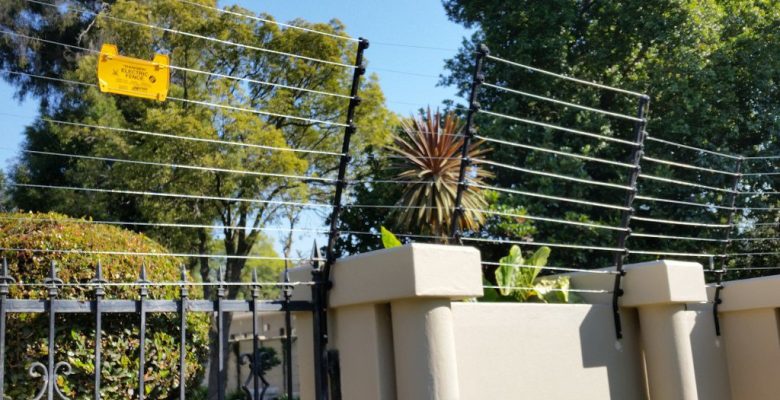Electric fencing systems provide an effective method for securing properties and managing animals. These systems use mild electric shocks to teach animals to respect boundaries and stay within designated areas. When properly installed and maintained, electric fences offer a safe, humane, and cost-effective containment solution.
This guide explores key considerations when evaluating electric fencing, from planning and installation best practices to safety protocols and diverse applications. It examines using electric fences with various animal species, containment objectives, and settings ranging from livestock farms to residential homes. The goal is to provide a comprehensive overview so property owners can make informed decisions if electric fencing suits their needs.
While highlighting the benefits, this guide also addresses ethical considerations regarding electric fences. When improperly implemented, these systems carry risks of harming animals or people. However, adhering to responsible installation and maintenance practices mitigates these concerns. Overall, electric fencing offers an adaptable tool for animal control that – when thoughtfully applied – can benefit both animals and owners.
- Benefits of Electric Fencing Systems
- Planning and Installing Electric Fencing Systems
- Selecting the Right Voltage for Different Animal Species
- Safety Considerations for Hard-to-Control Species
- Safety Considerations for Docile Animals
- Installation Best Practices
- Using High-Quality Materials
- Regular Maintenance for System Reliability
- Safety Considerations for Electric Fencing Systems
- Inspecting and Maintaining the Fence
- Checking for Damage and Loose Connections
- Verifying the Condition of Insulators and Posts
- Trimming Vegetation Around the Fence
- Ensuring Proper Grounding
- Burying Grounding Rods at Specified Distances
- Periodic Testing with a Digital Volt Meter
- Warning Signs and Visibility
- Placing Warning Signs at Regular Intervals
- Enhancing Fence Visibility with Brightly Colored or Reflective Materials
- Applications of Electric Fencing Systems
- Controlling Animal Access in Various Settings
- Keeping Animals In or Out with Electric Fences
- Protecting Livestock and Property on Farms and Ranches
- Managing Wildlife and Pets
- Final Thoughts on the Effectiveness and Ethical Considerations of Electric Fencing Systems
Benefits of Electric Fencing Systems
Compared to conventional fencing options like chain link, wood, or wire, electric fencing systems provide unique advantages:
- Cost-Effectiveness: Electric fences are significantly less expensive to install than traditional barriers, with minimal site preparation or construction materials required.
- Adaptability: The layout is highly customizable based on property size, terrain, purpose, and changing needs.
- Effectiveness: Electric shocks teach animals to respect boundaries, deterring escapes or trespassing more successfully than physical barriers alone.
- Low Maintenance: With no rigid components, electric fences avoid damage from environmental factors and require only basic, periodic inspection.
- Safety: Modern systems include safety features to avoid over-shocking animals. When properly installed, electric fences allow animals to comfortably coexist in shared spaces.
- Humane Deterrent: The mild shock provides an immediate yet harmless deterrent, causing less stress to animals than chasing escapees or using excessive force.
These advantages make electric fencing suitable for various applications, from small suburban lots to expansive rural properties. Their flexibility enables custom layouts suiting the containment goals for any animal species.
Planning and Installing Electric Fencing Systems
Achieving optimal results requires careful planning and proper installation tailored to the animals being contained. Key considerations include:
Selecting the Right Voltage for Different Animal Species
Voltage levels should suit the size, temperament, and coat thickness of animals to deliver an effective yet harmless shock:
Safety Considerations for Hard-to-Control Species
More powerful shocks are needed for large, aggressive, or stubborn animals like cattle, horses, or hogs. Systems offering 10,000+ volt output provide adequate deterrents.
Safety Considerations for Docile Animals
For smaller, timid creatures like sheep or backyard dogs, much lower voltages between 3,000-5,000 volts are appropriate to simply startle without harm.
Installation Best Practices
Proper installation is crucial for a reliably functioning electric fence that keeps animals in while preventing unintended harm.
Using High-Quality Materials
Choose reputable electric fencing brands using thick, galvanized wire and long-lasting conductor materials resistant to corrosion. Using substandard components risks shorts, current leaks, inconsistent shocks, and other failures.
Regular Maintenance for System Reliability
Test fences regularly to verify current flow and address any damage from weather, vegetation, or animals. Check voltage at multiple locations along the barrier confirming adequate output for consistent deterrence.
Safety Considerations for Electric Fencing Systems
When improperly installed or maintained, electric fences carry safety hazards including uncontrolled current flow, voltage spikes, and current leakage outside the barrier. However, adhering to critical safety practices eliminates these risks:
Inspecting and Maintaining the Fence
Routine inspections and repairs prevent safety issues:
Checking for Damage and Loose Connections
Look for vegetation contacting wires, damaged insulation, loose grounding rods, separated wire joints, and other issues that allow current to leak from the system.
Verifying the Condition of Insulators and Posts
Replace any cracked or damaged insulators that compromise the non-conductive barrier between energized wires and posts/ground. Check posts have not shifted, causing fence wires to sag.
Trimming Vegetation Around the Fence
Overgrown weeds/brush touching the wires can conduct electricity outside the fence, shocking people or animals. Maintain at least a 1-foot clearance around the barrier.
Ensuring Proper Grounding
Grounding rods stabilize erratic current and divert stray voltage into the soil, preventing uncontrolled shocks.
Burying Grounding Rods at Specified Distances
Grounding rods should be:
- At least 5/8-inch galvanized steel.
- Driven 6-8 feet into the ground.
- Spaced no more than 300-400 feet apart.
- Connected securely to the fence controller/charger unit.
Periodic Testing with a Digital Volt Meter
Measure grounding integrity at multiple points verifying stable, adequate voltage along all wires. Check for hotspots signaling grounding issues requiring rod repairs/additions.
Warning Signs and Visibility
Warning signs and visibility measures prevent accidental human contact:
Placing Warning Signs at Regular Intervals
Post highly visible warning signs around the perimeter warning people of the electric fence. Place these approximately every 100 feet or less.
Enhancing Fence Visibility with Brightly Colored or Reflective Materials
Make energized wires more visible by wrapping them with bright polytape or interweaving reflective ribbons. This alerts people to avoid contact with the barrier.
Applications of Electric Fencing Systems
Electric fences provide flexible solutions for diverse containment needs across various settings:
Controlling Animal Access in Various Settings
Electric fences can restrict animal access across many different properties including:
- Livestock farms.
- Ranches.
- Orchards and crop fields.
- Gardens and landscaping.
- Residential yards.
- Public spaces like parks and golf courses.
Their portability makes them ideal for subdividing pastures or excluding animals from environmentally sensitive areas. On farms integrating multiple livestock species, electric cross-fencing prevents intermingling and resource competition.
Keeping Animals In or Out with Electric Fences
Electric fences effectively achieve two key containment goals:
Protecting Livestock and Property on Farms and Ranches
Perimeter fencing around entire properties prevents valued livestock like cattle, horses, and sheep from straying where they risk injury, theft, or damaging neighboring property. This also deters predation from wildlife.
Managing Wildlife and Pets
Smaller interior electric barriers keep free-roaming pets or urban wildlife like deer out of gardens, landscaping, or other areas they might damage. This protects both property and animals.
Final Thoughts on the Effectiveness and Ethical Considerations of Electric Fencing Systems
When properly planned and installed, electric fencing offers an adaptable solution for safely securing properties and managing animal movement. These systems allow customized barrier layouts specific to the containment goals for any setting and species.
However, electric fences present risks if handled irresponsibly. Improper voltage levels, inadequate grounding, damaged wires, and unmarked fences can unintentionally harm animals or people. Additionally, electric shocks should never exceed what is necessary for effective deterrence.
Overall, electric fencing provides a useful tool for animal control that – when thoughtfully implemented – emphasizes welfare over convenience. By considering animals’ needs and routinely inspecting/maintaining fences, owners can implement electric barriers that are both safe and humane.










Question, can the signal wire be buried in pvc pipe li front of the driveway gate?? And still keep the dog away from the gate??
Yes, the signal wire can be buried in a PVC pipe in front of the driveway gate to maintain its function, but its effectiveness in keeping the dog away depends on the strength of the signal and the training of the dog.